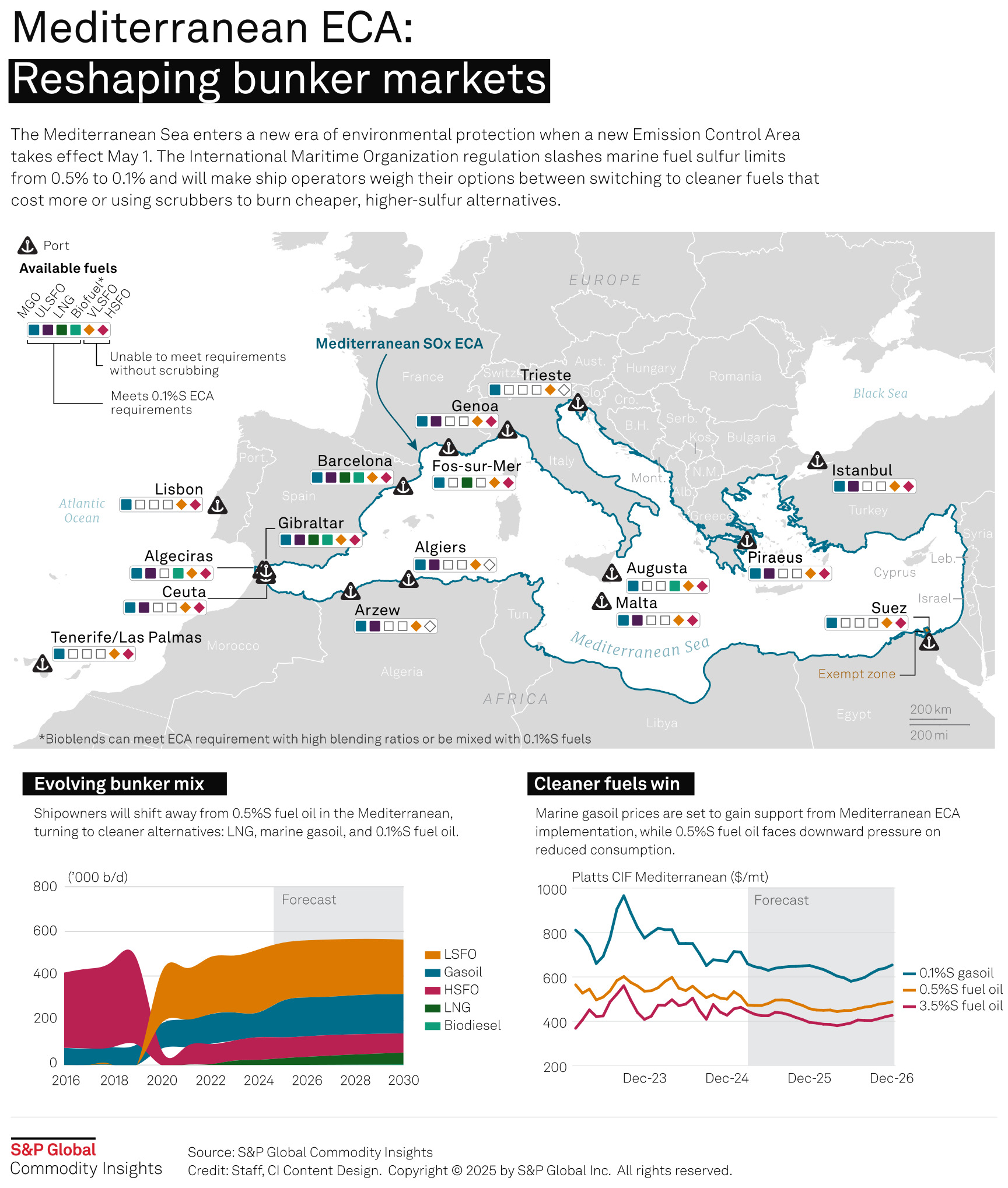- UN agency’s fifth ECA to come into force May 1.
- Sulfur limits reduced to 0.1% from 0.5% for non-scrubber ships.
- MGO is well supplied, while 10 ports can provide ULSFO: Platts survey.
The International Maritime Organization’s new sulfur regulation is driving shipping companies to use cleaner yet costlier energy, but industry participants suggest significant disruptions are unlikely due to the high availability of compliant fuels, reports Platts.
Sulphur limits for bunker fuels lowered
From May 1, the UN agency will lower the sulfur limits for bunker fuels in the Mediterranean Emissions Control Area to 0.1% from 0.5% for ships not equipped with scrubbers, in efforts to protect marine environments and coastal populations.
While alternative fuels like LNG and methanol can also be compliance options for vessels with bespoke propulsion technologies, analysts expect most conventional ships will need to burn 0.1%S marine gasoil or ultra low sulfur fuel oil rather than 0.5%S very low sulfur fuel oil when sailing through protected waters.
“As shipowners look to comply with the new sulfur limits … we can anticipate a shift in the market dynamics,” said Fotios Katsoulas, a research director at S&P Global Commodity Insights.
The Mediterranean ECA will be the fifth of its kind based on IMO rules, and market participants suggest the bunker and shipping industries are well prepared to adapt to such a regulatory change.
At least 16 bunker ports in the Mediterranean will be able to supply MGO, and 10 refueling hubs can provide ULSFO when sufficient demand arises once the rules come into force, according to a survey of over 20 industry participants by Platts, part of Commodity Insights.
Nearly all Mediterranean bunker ports in the survey are capable of gasoil supplies, while some across a wide range of geographical areas — from Gibraltar/Algeciras to Malta, then all the way to Istanbul — are ramping up their ULSFO availability.
Consultancy 2050 Marine Energy has forecast MGO’s share in the 22 million mt/year Mediterranean bunker market will jump to 33%-34% in 2026 from 17% in 2024, while ULSFO’s share is expected to rise to 10%-11% from 1%. VLSFO’s proportion is anticipated to collapse to 21% from 55%.
Did you subscribe to our daily Newsletter?
It’s Free Click here to Subscribe!
Source: Platts


















